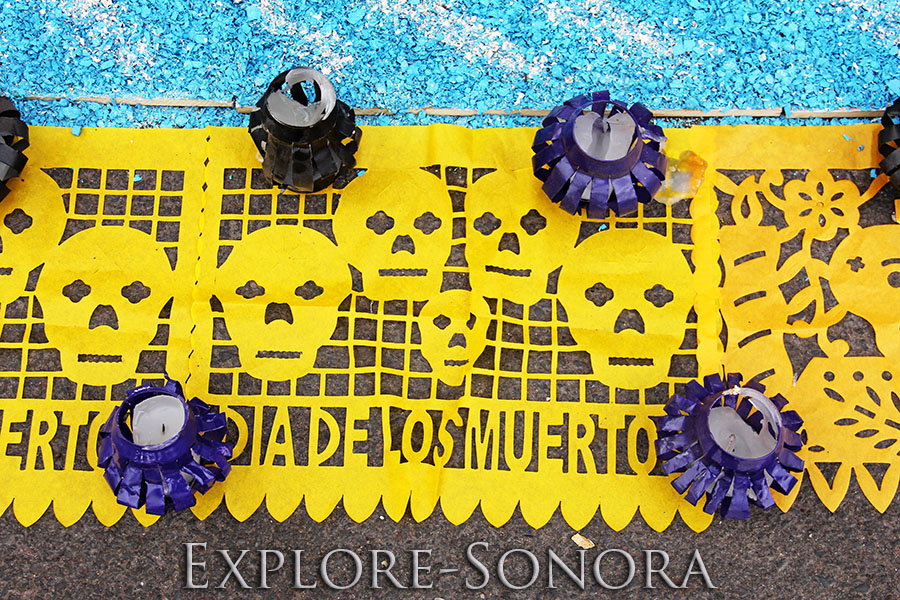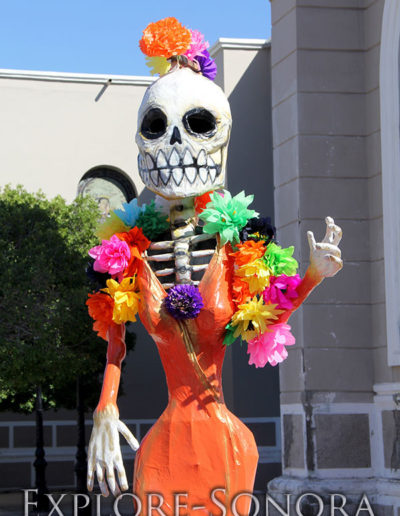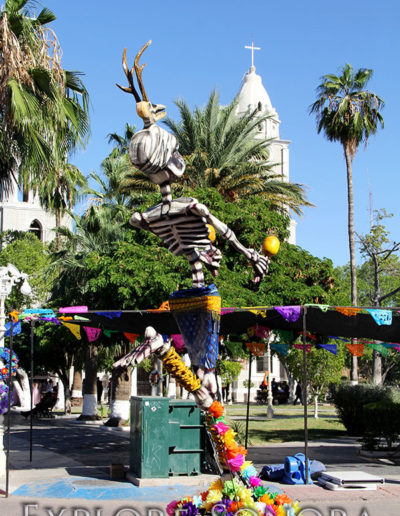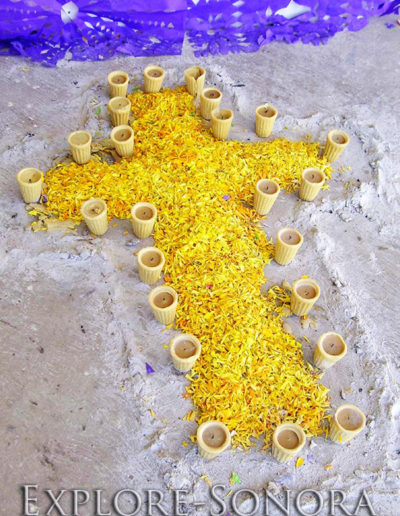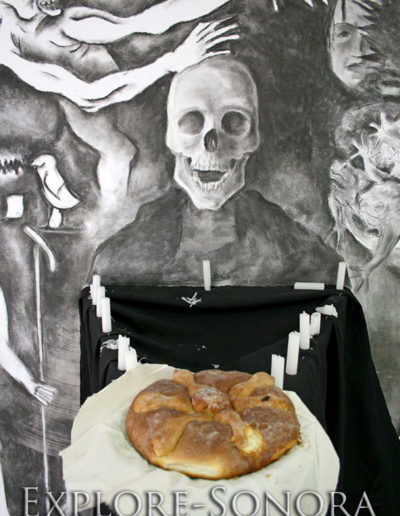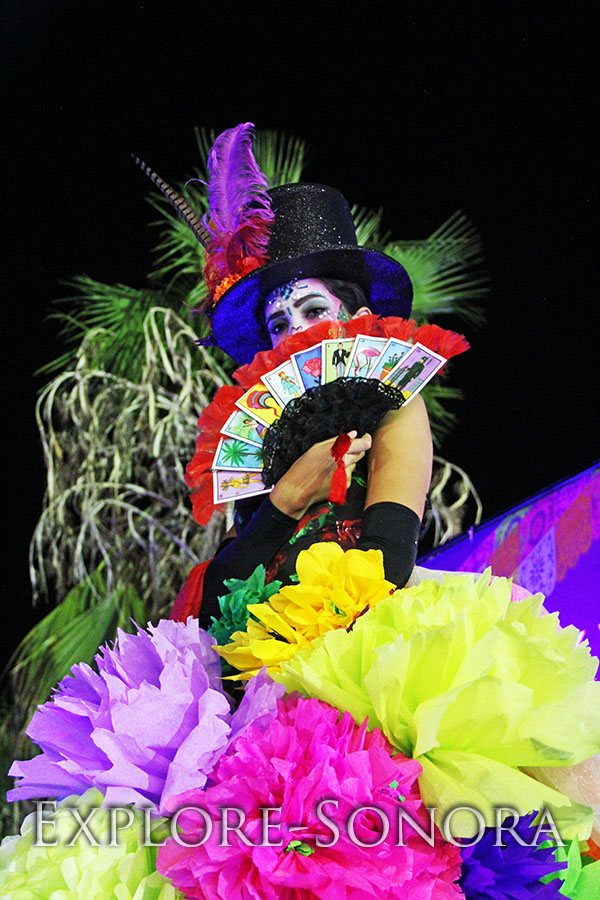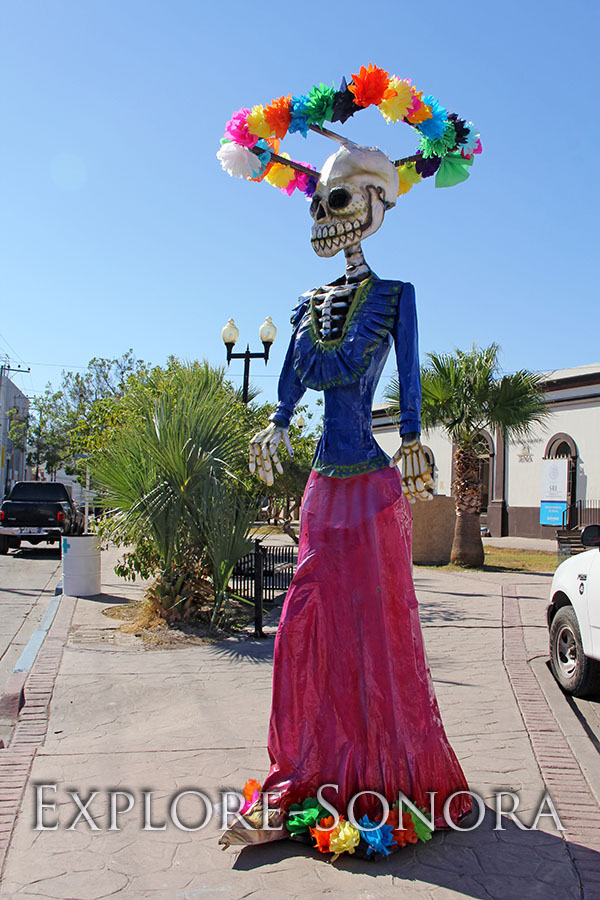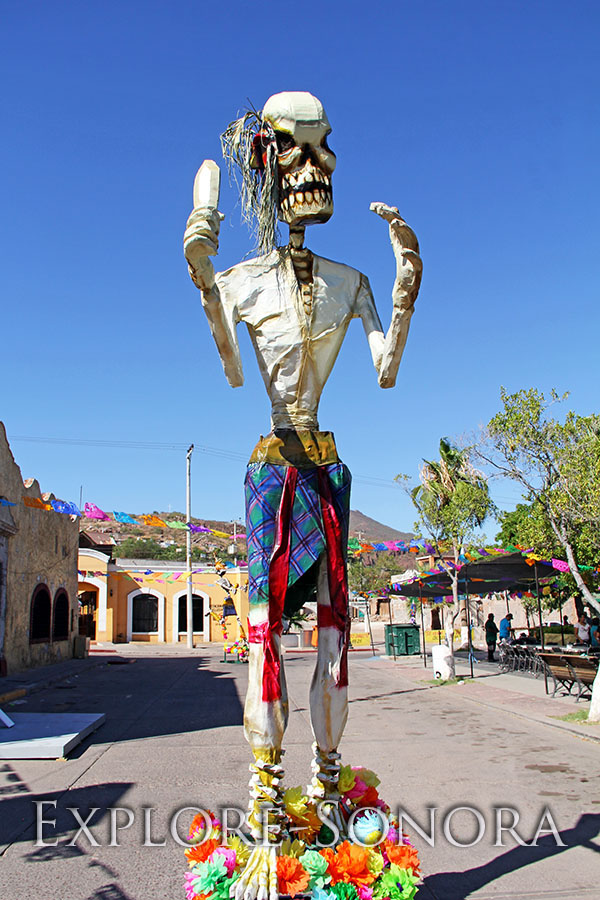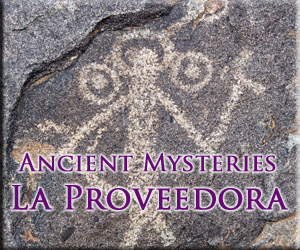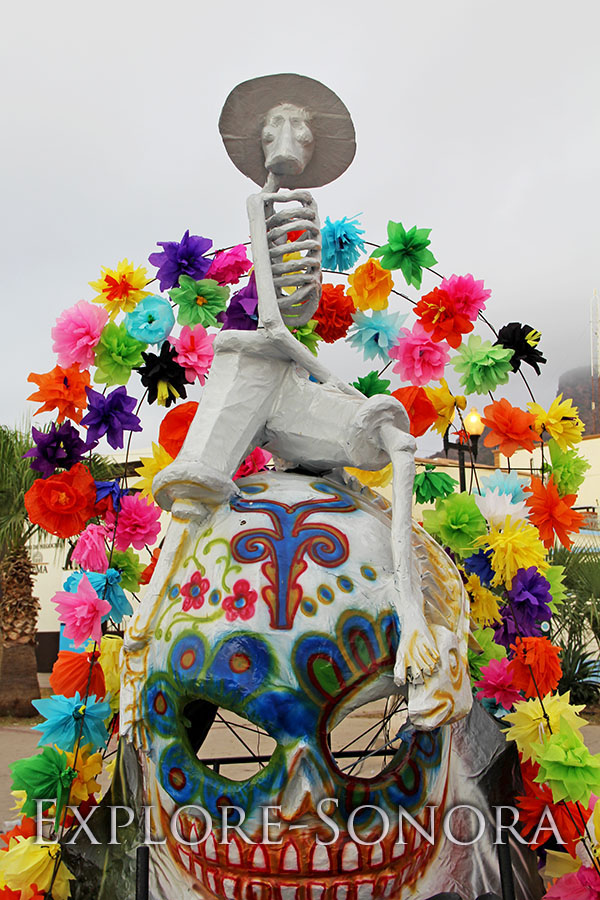Day of the Dead Spanish Vocabulary
There are specific terms in Spanish used to describe the people, characters, altar relics and other aspects of this colorful day. Increase your knowledge of the Dia de Muertos traditions and customs by learning Spanish Day of the Dead words and phrases
Altares
Pronounced with the stress on the second syllable (all-TAR-eys), a many Mexican families construct a Day of the Dead altar as a way to honor and remember their deceased loved ones. Also known as ofrendas, or offerings, many Sonorans create basic altars in their homes with the pictures and favorite foods and drink of the departed, flowers, bread, water and other traditional altar elements.
A traditional belief is that the spirit of the deceased person who is honored by the altar returns to earth on November 2 to reflect and enjoy the offerings placed on the ofrenda.
As cultural education, schools will often assign students to create altars in a school area or in a public location like the town plaza. The public altars are often multi-tiered and filled with items that are reminders of the departed and traditional in nature. Read more about Day of the Dead altar elements.
Angelitos
In addition to being celebrated as All Saints Day, the first day of November is the day of the Angelitos Inocentes, or Santos Inocentes. The innocent little angels are children who have passed away and, according to tradition, are believed to return on the evening of October 31 and spend November 1 with their family.
Calaca
Calaca is Mexican slang for “skeleton,” and you will hear the word often, because the calaca skeletons are used in Day of the Dead art and adornments, and many festivals use the word in their description.
Calavera
The word calavera means “skull.” Skulls are also prominent in Day of the Dead art, and calaveras de azucar, sugar skulls, are common altar adornments. Sugar skulls will often have the name of the deceased taped across their forehead.
Catrina
A Catrina is a classic female skeletal character used to depict the day of the dead. It is also what you call women whose faces are painted as skeletons and are dressed in classic Elizabethan-style dresses. The masculine form is known as a Catrín, for men who paint their faces during Day of the Dead festivals.
The original character of La Catrina was created by Jose Guadalupe Posada (1852–1913), a famed Mexican classical lithographer and illustrator. Posada created the Catrina character as humorous social commentary, and it has since become a central figure in Day of the Dead art, celebrations and adornments.
Cempasuchil
The Cempasuchil (sem-pa-sue-chill) is the bright yellow Mexican marigold, also known as the flor de muerto, which is the main floral adornment for gravesites and altars. Its strong scent and bright color are believed to be an attraction to the spirits of the deceased as they come to visit their family on the Day of the Dead.
Cirio
A cirio (sirio) is a basic, unadorned parafin candle placed on and around Day of the Dead altars. These white candles symbolize the soul being alone, and are typically placed in an arrangement representing the cardinal points of the cross.
Copal
The traditional Copal incense has been burned in ceremonies since pre-Hispanic times, and is commonly burned on or near altars as another scent to attract the spirits on their day. The resin of the Copal tree is used to make this unique scent. In fact, the name Copal is a derivation of the word copalli, which means “incense” in the Nahuatl language.
Fieles Difuntos
Fieles Difuntos are the “faithful departed” of El Día de los Difuntos, the November 2 Catholic feast day of All Souls. This religious holiday coincides with the date on which the traditional Day of the Dead is observed.
Ofrenda
The word Ofrenda means “offering.” It can refer to the items placed on the Day of the Dead altar, or to the altar itself.
Pan de Muerto
This bread of the dead is a common altar component and delicious accompaniment to hot chocolate or coffee. In Sonora it typically has a round form, with bread rolls shaped as bones on top and covered with powdered or granular sugar.
Papel Picado
Literally meaning “shredded paper,” or confetti, papel picado refers to the colorful tissue paper rectangles that are cut to display Dia de Muertos designs and hung from string above fiestas and on the front and sides of altars.
Petate
A petate is a bedroll woven from the palms of the petate palm, that is placed in front of the altar as a place to kneel in reflection, or pray.
Santos Inocentes
In addition to being celebrated as All Saints Day, the first day of November is the day of the Angelitos Inocentes, or Santos Inocentes. The innocent saints are children who have passed away and, according to tradition, are believed to return on the evening of October 31 and spend November 1 with their family.
Tapanco
A traditional type of altar made by the Yaqui and Mayo indigenous groups of Sonora.
Tapete de Arena
Literally meaning “rug of sand,” this phrase (ta-pay-tay day arayna) refers to designs made from materials like sand, flowers, seeds or pieces of plastic on the ground in front of and on the side of altars. These are most commonly used to create crosses, but are also used to create symbols and other more intricate designs.
Todos los Santos
Todos los Santos means “All of the Saints,” and is used in reference to the Catholic feast day of All Saints on November 1. That date is also the first day of the Day of the Dead (Dia de los Muertos) celebration, when deceased children and infants, the santos inocentes, or angelitos, are honored and remembered.
Vela
A vela is a candle, typically the type of candle that is in a glass container that bears the image of a saint. Velas are placed on a grave or Day of the Dead altar to serve as a symbolic guide to light the deceased’s way in the ascension of the spirit.
Sonoran Day of the Dead Altars
Day of the Dead Altar Elements
Sonoran Day of the Dead Adornments
Sonoran Day of the Dead Cemetery Photos
Sonoran Day of the Dead Art
Day of the Dead in Sonora, Mexico

